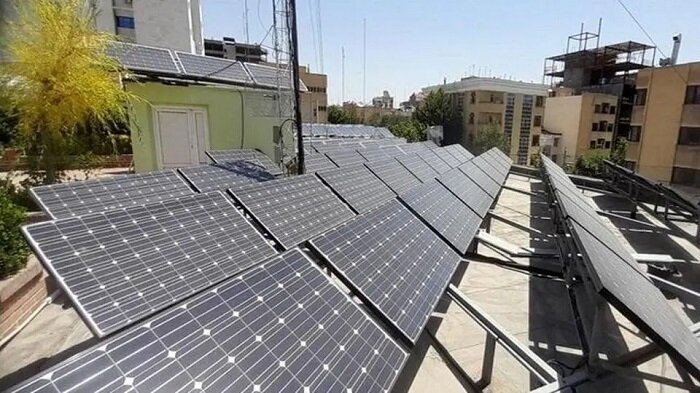Over 1,200 government offices equipped with solar panels

TEHRAN - Iran has equipped 1,239 government offices with solar panels as part of a nationwide energy-saving initiative, an official from the state-run Power Generation, Distribution and Transmission Company (Tavanir) said.
According to Reza Kafili, Director General of Engineering and Network Operations at Tavanir, the solar installations have so far added around 26 megawatts to the renewable energy capacity of public institutions.
The government aims to expand this capacity to 1,645 megawatts.
“There are about 100,000 administrative and public service buildings across the country, all now equipped with smart meters that allow remote monitoring of their electricity consumption,” Kafili told IRIB.
A directive issued last year mandates public offices to cut their electricity use by 30 percent during working hours—from 6 a.m. to 1 p.m.—compared to the previous year, and by 60 percent after working hours.
“Non-compliance will result in power restrictions or disconnections,” he warned.
The official added that Tavanir is using artificial intelligence-based platforms to monitor cooling systems and ensure indoor temperatures in public offices do not fall below 27°C, defined as the thermal comfort threshold.
In collaboration with the National Engineering Organization, a new agreement now requires that energy optimization and the integration of solar power be incorporated into the design of all new government buildings.
Kafili also said a new initiative mobilizes volunteer units in public offices to help enforce energy-saving measures. Monitoring teams have also been formed under local electricity departments to conduct on-site inspections not only at government offices but also at high-consumption households and businesses.
“All government offices are required to supply 20 percent of their electricity demand through solar panels, and this plan is being implemented with urgency,” he emphasized.
In late May, the vice president had announced that the government is rapidly pursuing the installation of solar panels in the organizations and executive agencies, especially in Tehran.
Allaedin Rafizadeh said that all government agencies in Tehran will be equipped with solar power plants within the next month.
The government has parallel plans to optimize energy consumption, including the installation of solar power plants in executive agencies, the official emphasized.
Iran installed approximately 600 megawatts (MW) of solar power capacity in the past Iranian year (ending March 2025), marking a fourfold increase over the previous annual average of 150 MW, according to Alireza Parandeh Motlaq, deputy head of the Renewable Energy and Energy Efficiency Organization (SATBA).
In an appearance on the state TV, Parandeh Motlaq said the Energy Ministry has undertaken the development of several government-led solar power plants to help meet growing electricity demand from households and industry. Although initially state-funded, these plants are ultimately intended for transfer to the private sector.
SATBA’s current roadmap includes a 5,000 MW expansion target. Given the urgency of the timeline set by authorities, some of the required equipment is being sourced internationally. Imported solar components are being shipped via rail and sea, with maritime routes taking about 35 days and rail deliveries requiring 15 days. As of now, three shipments of equipment have arrived, with two already dispatched to sites that were designated and designed last year.
Parandeh Motlaq noted that in the previous Iranian year (ended on March 20), the country achieved its highest-ever annual capacity addition in renewable energy. Meanwhile, the Energy Ministry has received private-sector proposals for a total of 38,000 MW of renewable capacity. The government plans to build 5,000 MW of solar plants and procure 2,000 MW worth of equipment in the near term.
He added that per recent regulations, any industrial facility that generates part of its own electricity using renewable sources is exempt from mandatory load reduction measures—a policy that has been in effect since 2023.
EF/MA
Leave a Comment